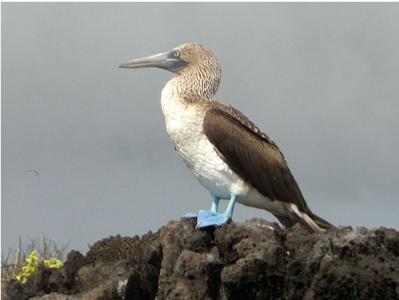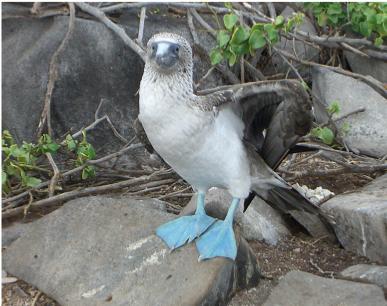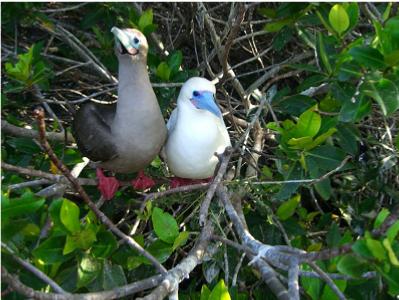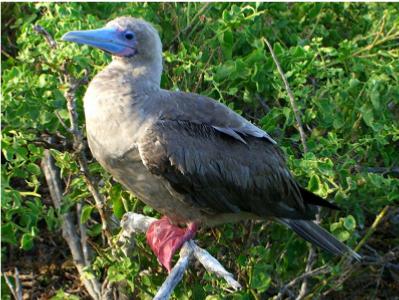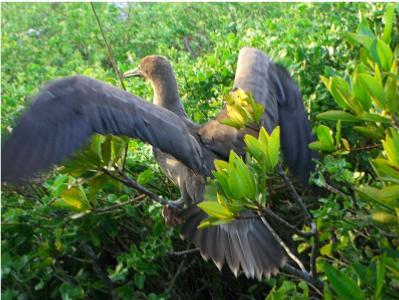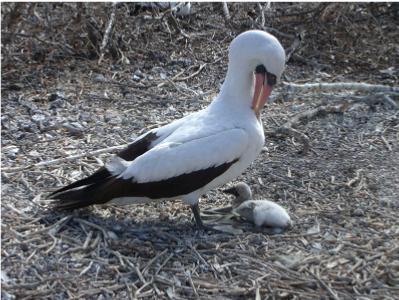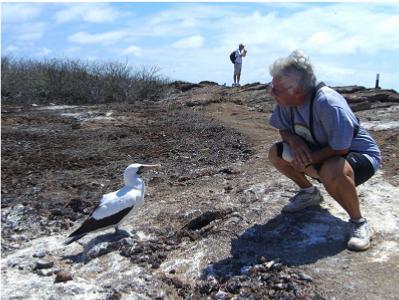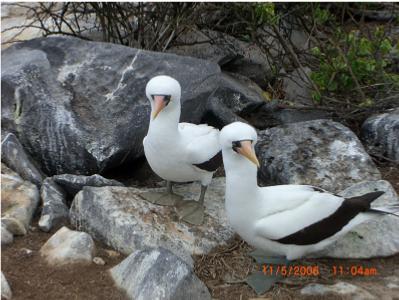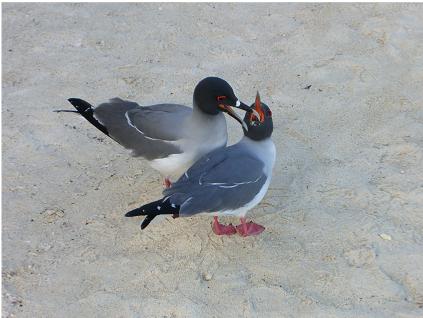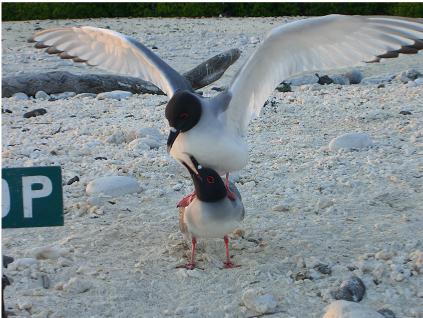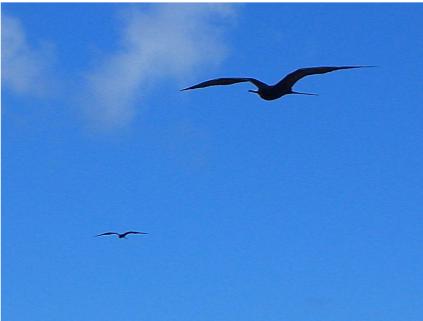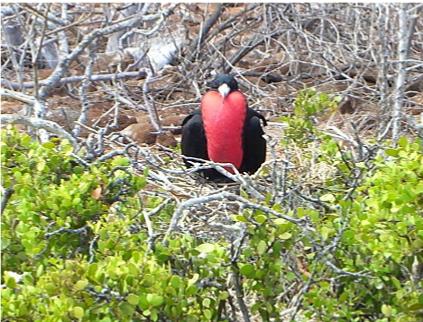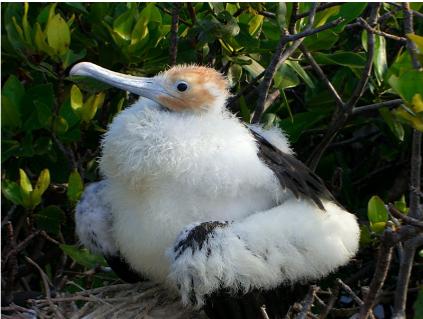SOME OF THE BIRDS WE SAW IN THE GALAPAGOS
The birds were numerous and of many varieties. Of course the ones that everybody talks about are the boobies. We saw blue footed boobies, red footed boobies and Nasca (or masked) boobies.
The bird on the left and the one below are the Blue Footed boobie.
A favorite feature of the Blue Footed Booby is its mating dance.
Click here
to see a video of that dance.
Then there is the Red Footed Booby. It's amazing how close you can get to these birds.
On the right, a pair of Red Footed Boobies nesting and below one with it's wings spread. They get to be reasonably large birds.
And then there are the Nazca or Masked Boobies. There doesn't seem to be any shortage of these birds. We saw them on many of the islands.
The birds and animals in the Galapagos don't seem to be afraid of humans. Look how close Granny is to the Masked Booby in the picture above. On another page, you will see a baby sea lion that came up and sniffed at Grandpa's knee.
On the upper left are a baby Masked Booby and one of the parents. Both the male and female take turns tending to the egg, so you can't always tell which one is with the chick.
On the lower left is a pair of Masked (Nazca) Boobies.
Another very prolific variety of birds in the Islands is the Swallow-tailed gull. We saw them on almost every island and in abundance.
They also showed no fear of us. In addition, they didn't seem to care about us watching them mate. Bellow are a couple of pictures of the Swallow-tailed gull. The picture on the right shows the gulls mating.
Click here for a video of the gulls.
We also saw a lot of Frigate birds. The Frigate is an outstanding flyer. However, its real claim to fame is the large red pouch that the male inflates to attract a female at mating time.
Above left are frigate birds in flight. They are beautiful, graceful flyers. Above right is a male frigate bird trying to attract a mate.
On the left is a picture of a juvenile frigate. It won't be long before it loses its downy cover and takes on the look of the adult bird.
